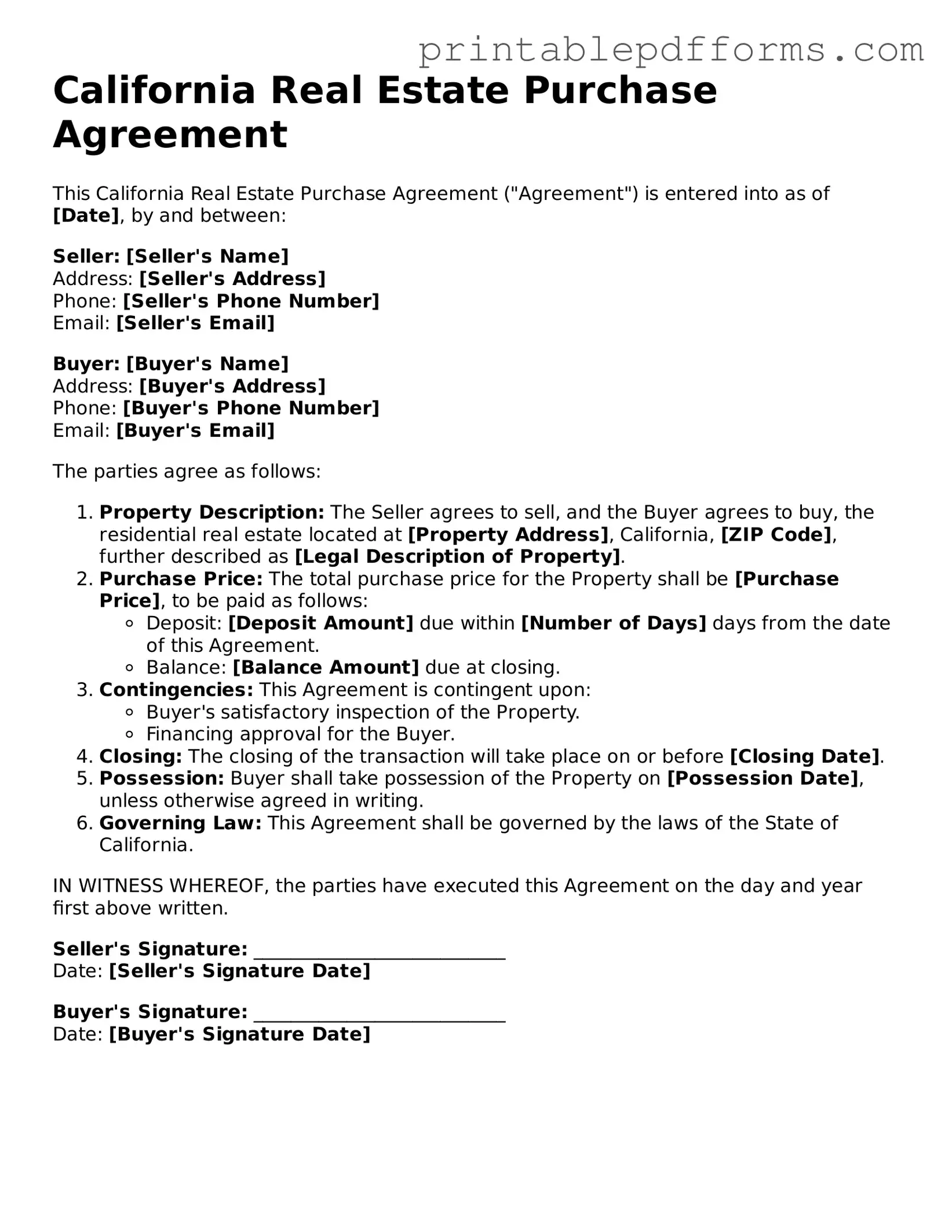California Real Estate Purchase Agreement
This California Real Estate Purchase Agreement ("Agreement") is entered into as of [Date], by and between:
Seller: [Seller's Name]
Address: [Seller's Address]
Phone: [Seller's Phone Number]
Email: [Seller's Email]
Buyer: [Buyer's Name]
Address: [Buyer's Address]
Phone: [Buyer's Phone Number]
Email: [Buyer's Email]
The parties agree as follows:
- Property Description: The Seller agrees to sell, and the Buyer agrees to buy, the residential real estate located at [Property Address], California, [ZIP Code], further described as [Legal Description of Property].
- Purchase Price: The total purchase price for the Property shall be [Purchase Price], to be paid as follows:
- Deposit: [Deposit Amount] due within [Number of Days] days from the date of this Agreement.
- Balance: [Balance Amount] due at closing.
- Contingencies: This Agreement is contingent upon:
- Buyer's satisfactory inspection of the Property.
- Financing approval for the Buyer.
- Closing: The closing of the transaction will take place on or before [Closing Date].
- Possession: Buyer shall take possession of the Property on [Possession Date], unless otherwise agreed in writing.
- Governing Law: This Agreement shall be governed by the laws of the State of California.
IN WITNESS WHEREOF, the parties have executed this Agreement on the day and year first above written.
Seller's Signature: ___________________________
Date: [Seller's Signature Date]
Buyer's Signature: ___________________________
Date: [Buyer's Signature Date]
